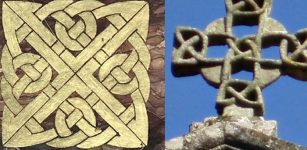Baths Of Caracalla: Italian Antique Thermae Complex For Leisure, Gossip, Business And Socialisation
A. Sutherland - AncientPages.com - The Baths of Caracalla are undoubtedly among imperial Rome's most ambitious architectural masterpieces.
Aerial view of Baths of Caracalla. Credit: Adobe Stock - Stefano Tammaro
Their name relates to the Roman Emperor Marcus Aurelius Antoninus from 198 to 217 AD, better known by his nickname 'Caracalla. 'The Baths of Caracalla are the second largest (after the Baths of Diocletian) but they represent most complete bathing complex in Rome.
His colossal baths, located in the south of Rome, were not only the emperor's famous achievement but also represented a unique world where the Roman society enjoyed entertainment and intellectual debates and was busy concluding business contracts. They could relax and spend their free time caring for both the body and the spirit in the baths.
Even though all residents had to pay for the use of the baths, the fee was not high, and it was worth paying to enjoy comfortable bathing.
This facility was the largest swimming pool, which, in addition to many swimming pools, consisted of spaces for various sports and social gatherings of the Rome's citizens.
Ruins of the Baths of Caracalla in Rome. Credit: Abobe Stock - Only Fabrizio
Emperor Caracalla commissioned the monumental bathhouse complex in the years 211-216. However, it is believed that Emperor Septimius Severus initiated the construction of the baths, which was later completed during the reign of his son, Caracalla.
At the time of the construction, it was the second largest thermal complex in Rome, second only in size to the Trajan's Thermae ('Terme di Traiano'), which is today in ruins.
For five years, usually, about 9,000 laborers were involved in the complex's construction every day. The thermal baths - extended with several additional structures during the reign of Emperor Alexander Severus - functioned for almost 300 years.
Impressive Architecture Of The Caracalla's Baths
The thermal baths of Caracalla had about 250 columns, and more than 6,000 cubic meters of the finest building materials like granite and marble were used to decorate the interiors.
Symmetry Dominated The Baths Of Caracalla
The vast bath complex was arranged symmetrically along the great hall with the four doors leading to the vestibule, changing rooms, and then into the gyms, a series of rooms for diverse physical activities.
Athletes mosaics from the Baths of Caracalla. Beautiful mosaics covered the floors of the floors of the public libraries located on the east and west sides of the bath complex. Image source
It is assumed this place could accommodate up to 1,500 -1,600 bathers simultaneously, and about 8,000 Romans passed through the complex daily.
The bath complex covered approximately 25 hectares (62 acres). The complex is rectangular, measuring 337 m × 328 m. Its construction involved the moving of a substantial amount of earth, as parts of the nearby hills had to be removed or leveled into platforms. Several million bricks were used in the construction.
The water used to power the pools and attractions was taken mainly from the nearby Aqua Marcia aqueduct. The water was collected in cisterns located in the southern part of the thermal baths. It is estimated that the cistern could hold about 8,000 liters of water, which was then heated using a wood-burning stove. To ensure the optimal temperature in the pools throughout the day, about 1 ton of wood was used to burn.
The exterior and interior of the baths were richly decorated. Even today, there are still well-preserved fragments of water fountains, statues, sculptures, floor mosaics, and marble pieces, once part of the building's decoration.
Rooms With Many Functions
The complex consisted of more than 20 rooms, some of which were the most important and popular.
Ruins of the Baths of Caracalla. Credit: Adobe Stock - Marek Poplawski
The first was the 'caldarium,' a circular pool with warm water (unfortunately, this one no longer exists.) Another was the 'tepidarium' (medium-temperature room), and the next was the 'frigidarium, a rectangular pool of cold water decorated with beautiful sculptures. Popular and frequently visited was also an Olympic-sized swimming pool called the 'Natatio.' All these spaces were the central part of the baths' complex.
They were surrounded by smaller rooms, such as locker rooms or two gymnasiums built for physical exercise rooms). A roof, except for the palestra, closed most of the rooms. The palestra was the place for people interested in wrestling and boxing exercises.
The two large rooms at the corners were used as libraries, one for Greek language texts and one for Latin language texts. The surviving library had three walls covered by 32 niches that housed the books.
Written by – A. Sutherland - AncientPages.com Senior Staff Writer
Copyright © AncientPages.com All rights reserved. This material may not be published, broadcast, rewritten or redistributed in whole or part without the express written permission of AncientPages.com
More From Ancient Pages
-
 Evidence The Khufu Channel Aided The Construction Of The Giza Pyramids Found – Scientists Say
Archaeology | Aug 31, 2022
Evidence The Khufu Channel Aided The Construction Of The Giza Pyramids Found – Scientists Say
Archaeology | Aug 31, 2022 -
 Coyote: Hero, Trickster, Immortal And Respected Animal In Native American Myths
Featured Stories | May 10, 2016
Coyote: Hero, Trickster, Immortal And Respected Animal In Native American Myths
Featured Stories | May 10, 2016 -
 Celtic Knot Decorated Bible, Gospels, Celtic Crosses And Symbolized Strength, Love And Continuity Of Life
Ancient Symbols | Nov 8, 2018
Celtic Knot Decorated Bible, Gospels, Celtic Crosses And Symbolized Strength, Love And Continuity Of Life
Ancient Symbols | Nov 8, 2018 -
 Delphic Mysteries – Extraordinary Encounter At An Ancient Temple – Part 2
Ancient Mysteries | Apr 3, 2023
Delphic Mysteries – Extraordinary Encounter At An Ancient Temple – Part 2
Ancient Mysteries | Apr 3, 2023 -
![Photo taken on Dec 20, 2015 shows hoof-shaped gold ware unearthed from the main coffin in the Haihunhou (Marquis of Haihun) cemetery, East China's Jiangxi province. [Photo/Xinhua]](https://www.ancientpages.com/wp-content/uploads/2015/12/MarquisofHaihuntomb1-307x150.jpg) Does A 2,000-Year-Old Tomb Belong To Marquis of Haihun? – Search For His Seal Continues
Archaeology | Dec 25, 2015
Does A 2,000-Year-Old Tomb Belong To Marquis of Haihun? – Search For His Seal Continues
Archaeology | Dec 25, 2015 -
 Pre-Clovis, Paisley Caves: Archaeologists Identified The Earliest Population Of North America
Archaeology | Jul 16, 2020
Pre-Clovis, Paisley Caves: Archaeologists Identified The Earliest Population Of North America
Archaeology | Jul 16, 2020 -
 Unique Miniature Roman Gold Lock Smaller Than A One-Euro Coin Discovered In Germany
Archaeology | Jan 31, 2025
Unique Miniature Roman Gold Lock Smaller Than A One-Euro Coin Discovered In Germany
Archaeology | Jan 31, 2025 -
 Colosseum-Like Structure Unearthed In 2700-Year-Old Ancient City Of Mastaura
Archaeology | Aug 22, 2020
Colosseum-Like Structure Unearthed In 2700-Year-Old Ancient City Of Mastaura
Archaeology | Aug 22, 2020 -
 Oedipus – Tragic Prophecy About A Man Who Couldn’t Escape Fate
Featured Stories | Jan 10, 2019
Oedipus – Tragic Prophecy About A Man Who Couldn’t Escape Fate
Featured Stories | Jan 10, 2019 -
 Mystery Of The Controversial Phantom Time Hypothesis
Featured Stories | Mar 21, 2019
Mystery Of The Controversial Phantom Time Hypothesis
Featured Stories | Mar 21, 2019 -
 Colossi Of Memnon Guarded Temple Of Pharaoh Amenhotep III And Curious Sound Phenomenon
Featured Stories | Feb 2, 2021
Colossi Of Memnon Guarded Temple Of Pharaoh Amenhotep III And Curious Sound Phenomenon
Featured Stories | Feb 2, 2021 -
 Extremely Brutal Conflicts Among Maya Broke Out Before Civilization’s Decline
Archaeology | Aug 8, 2019
Extremely Brutal Conflicts Among Maya Broke Out Before Civilization’s Decline
Archaeology | Aug 8, 2019 -
 Sobekneferu: First Female Pharaoh In Ancient Egypt
Featured Stories | Mar 9, 2019
Sobekneferu: First Female Pharaoh In Ancient Egypt
Featured Stories | Mar 9, 2019 -
 The Lycurgus Cup: Fascinating Artifact That Reveals Prehistoric Knowledge Of Nanotechnology
Ancient Technology | Aug 2, 2018
The Lycurgus Cup: Fascinating Artifact That Reveals Prehistoric Knowledge Of Nanotechnology
Ancient Technology | Aug 2, 2018 -
 Unique 17th Century Sunken Swedish ‘Bodekull’ Ship – Identified
Archaeology | Jun 24, 2017
Unique 17th Century Sunken Swedish ‘Bodekull’ Ship – Identified
Archaeology | Jun 24, 2017 -
 On This Day In History: Astronomer John Couch Adams And The Discovery Of Planet Neptune – On July 3, 1841
News | Jul 3, 2016
On This Day In History: Astronomer John Couch Adams And The Discovery Of Planet Neptune – On July 3, 1841
News | Jul 3, 2016 -
 Llanbadoc Discovery: Late Medieval Artifact And The Battle Of Usk
Artifacts | Oct 2, 2018
Llanbadoc Discovery: Late Medieval Artifact And The Battle Of Usk
Artifacts | Oct 2, 2018 -
 Unusual Secret May Be Hidden In A Mysterious Valley In The American Southwest
Featured Stories | Jan 30, 2024
Unusual Secret May Be Hidden In A Mysterious Valley In The American Southwest
Featured Stories | Jan 30, 2024 -
 Mystery Of Mexico’s Bizarre Mummy May Never Be Solved
Featured Stories | Sep 17, 2024
Mystery Of Mexico’s Bizarre Mummy May Never Be Solved
Featured Stories | Sep 17, 2024 -
 Terrifying Buggane: Demonic And Tyrannical Celtic Demon That Hated Churches And Set Them On Fire
Celtic Mythology | Jul 14, 2017
Terrifying Buggane: Demonic And Tyrannical Celtic Demon That Hated Churches And Set Them On Fire
Celtic Mythology | Jul 14, 2017




